ISSN ONLINE(2319-8753)PRINT(2347-6710)
ISSN ONLINE(2319-8753)PRINT(2347-6710)
| Pinku Sarma Assistant professor, Department of Chemistry, D.k. College, India. |
| Related article at Pubmed, Scholar Google |
Visit for more related articles at International Journal of Innovative Research in Science, Engineering and Technology
The quality analysis of some physio-chemical parameters of the ground water collected from different locations of nearby area of Mirza, all used for drinking purpose was done in this work. The average pH values were found in the range 6.3-7.6. . The average values of temperature for the ground water sources were found without much variation. The Electrical conductivity and Hardness (Ca & Mg) of ground water were found within the permissible limit. The value of conductance gives a qualitative measurement of extent of mineralization of water.
Keywords |
| Hardness, Electrical conductivity, temperature, ground water |
INTRODUCTION |
| The chemical composition of ground water is vital for the natural functioning of ground water in ecosystem, drinking water production and anthropogenic use of ground water for agriculture, industrial and other purpose.1 It is believed that ground water is purer and safer than surface water due to protective qualities of the soil cover. Many unseen dissolved mineral and organic constituents are present in ground water in various concentrations. Generally ground water carries higher mineral content than surface water because of slow circulation and longer period of contact with sediment materials. Ground water is less susceptible to bacterial pollution than surface water because the soil and rocks through which ground water flows screen out most of the bacteria. Hydrothermal processes including dissolution, precipitation, ion exchange, sorption, desorption together with the residence time occuring along the flow path, control the variation in chemical composition of ground water. The WHO has introduced a set of guidelines for drinking water quality (WHO, 2004) to ensure physical, chemical and biological composition of water within the limit; so as not to cause any undesirable effect on humans over a long period of consumption.2 |
| Naturally occurring nitrate, phosphate, magnesium, chloride and total dissolved solids (TDS) can make ground water unsuitable for drinking. Common problems of drinking water include exposure to toxic inorganic substances, heavy metals, bacterial and other pathogens, increased nitrogen concentration and other trace chemicals and micronutrients in drinking water resources. The consumption of nitrate contaminated water causes high risk of methaemoglobinaemia in infants and also cause disorders of alimentary canal, respiratory and nervous system.3,4 A high phosphorus load is often the result of agricultural activities or domestic pollution. Fluoride is both beneficial and harmful for living organism. Intake of small quantity of fluoride in the permissible limit of 0.5-1.0 mg/L is known to be beneficial for human health in production and maintenance of healthy teeth and bones. However, a concentration higher than 1.5 mg/L can cause dental and skeleton fluorosis.5 |
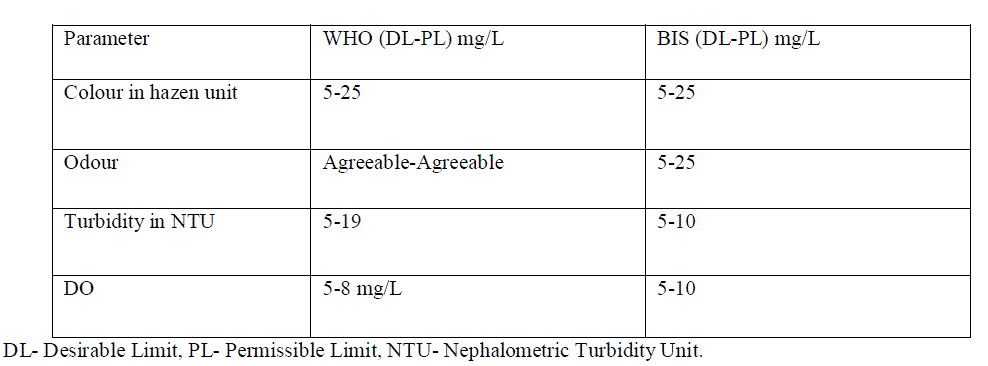 |
AIMS AND OBJECTIVES |
| The main objective to this study is to determine the some physio-chemical properties of nearby area of Mirza. The physio-chemical properties determined are Viz; |
| A. PH |
| B. Odour |
| C. Temperature |
| D. Electrical Conductivity and |
| E. Hardness (Ca and Mg) |
EXPERIMENTAL |
| Polyethylene bottles of 2L capacity is used for sampling purpose. The sampling bottles were washed with soap, followed by dil. HNO3, tap water and finally with distilled water. When water is collected from tube wells the water is made to run from the sampling source for 4-5 minute before taking the final sample. |
STUDY AREA |
| For taking water sample the nearby area of Mirza are: |
| Bijoynagar-A, Batarhat-B, Nahira-C, Rampur-D, Dakhala-E, Bhagabatipara-F, Palashbari-G, Uparhali-H, Mirza-I |
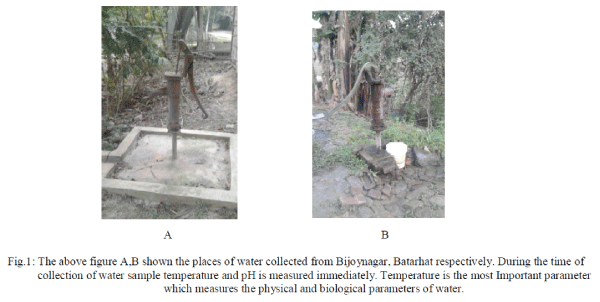 |
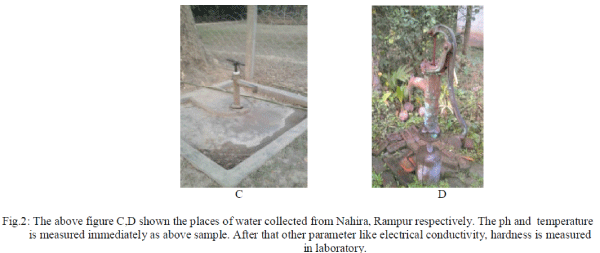 |
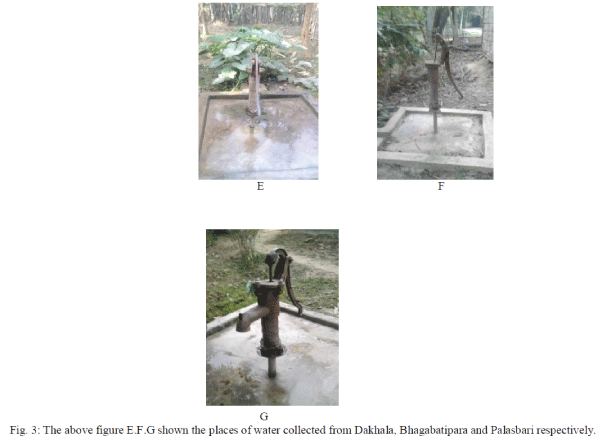 |
| All the above figure shown the places from where the water sample collected. In all the places minimum temperatre is found to be 18.40C and maximum is found to be 26.50C. During the present investigation, pH varies between 6.3-7.6. The other parameters electrical conductivity and hardness are also found to be within the range as per WHO limit. |
RESULTS AND DISCUSSION |
A. Physio-Chemical parameters of Ground water |
| Temperature: Temperature is one of the most important physical parameter which control the other physical, chemical and biological parameters of water. Temperature of water samples were measured immediately after collection with a mercury thermometer graduated in between 00c and 1000c. A rise in temperature of water leads to the speeding up of the chemical reactions in water, reduces the solubility of gases and changes the taste and odour. |
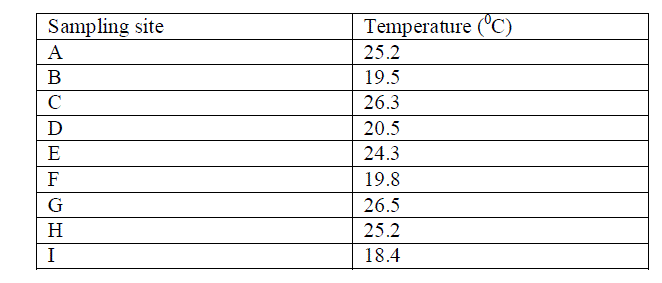 |
| pH: The pH of ground water samples were determined with a digital pH meter. The pH values for water generally lie between 6.5-8.5. During the present investigation, pH varies between 6.3-7.6. |
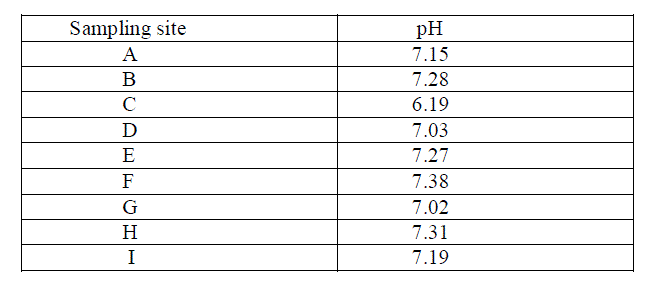 |
| Odour: Disagreeable odour and metallic taste were observed in some of the samples. This may be due to high content of iron. |
ELECTRICAL CONDUCTIVITY |
| The maximum limit of electrical conductivity in drinking water is prescribed as 1,500 μs/cm as per WHO standard. The electrical conductivity values in all the study area are found below this limit. This shows that the ionic content of ground water samples are not excessive. |
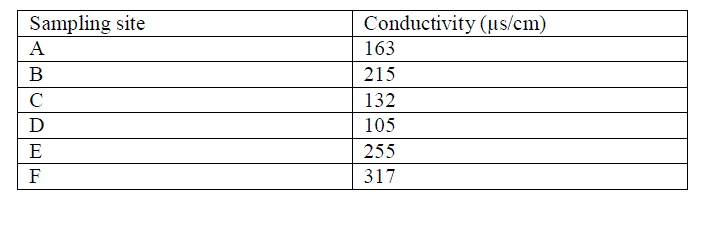 |
 |
DETERMINATION OF HARDNESS (CA & MG) |
| Calcium: It is the fifth among the elements in natural water in order of abundances. Calcium contributes to the hardness making the water unsuitable for some of its uses. It has no record causing adverse effect on human health. The guideline value of Ca in drinking water is 100mg/L. It has been found that all the ground water samples are within the permissible limit. |
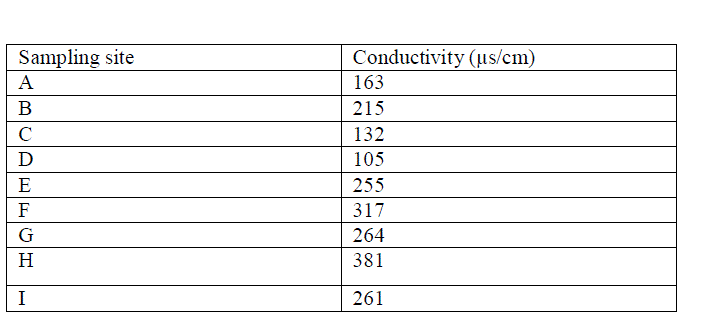 |
| Magnesium: WHO recommended the permissible limit of Mg in drinking water 150 mg/L. In this study all are in the permissible limit. |
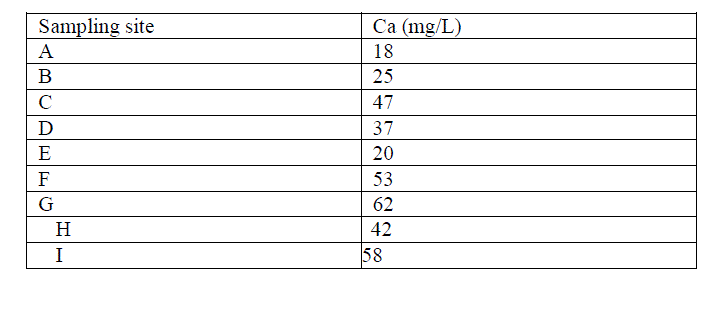 |
CONCLUSION |
| The average pH values of all ground water sources were found in the range 6.3-7.6. The average values of temperature for the ground water sources were found without much variation. The Electrical conductivity and Hardness of ground water were found within the permissible limit. |
References |
|